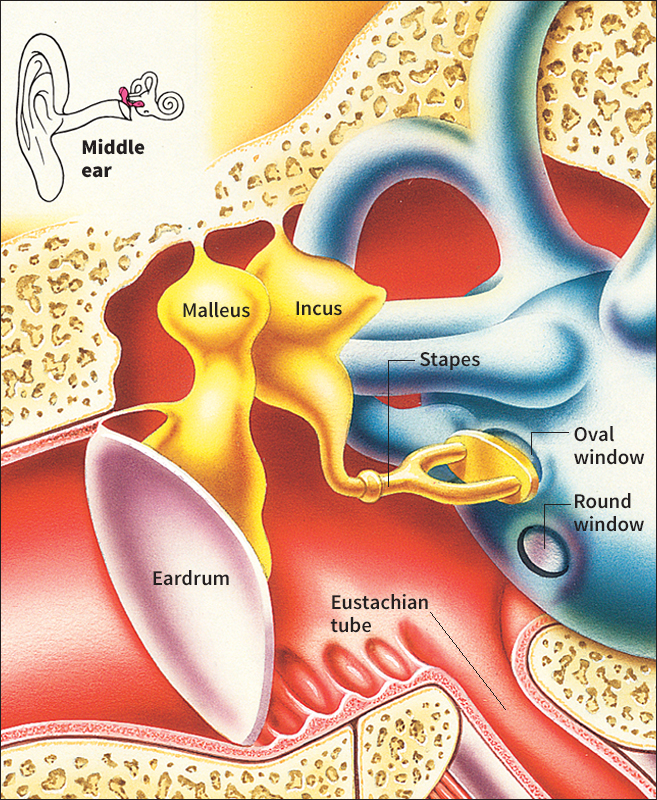Eustachian << yoo STAY shuhn, yoo STAY shee uhn, or yoo STAY kee uhn, >> tube, is a canal (passage) about 1.5 inches (3.8 centimeters) long, made of bone and cartilage, and lined with mucous membrane. Also called the auditory tube, it passes forward, in, and down from the middle-ear cavity to the throat. It allows air to pass from the throat to the middle ear. Opening the mouth or swallowing helps open the tube. Therefore, when descending in an elevator or airplane, opening the mouth or swallowing helps adjust the air pressure on the inner side of the eardrum to the air pressure on the outside. Severe pain and hearing loss can result from a marked difference in air pressure between the middle ear and the outside air. The tube also allows mucus formed in the middle-ear cavity to escape into the throat. Infections often pass through the Eustachian tube from the throat to the middle ear. Italian doctor Bartolommeo Eustachio discovered the Eustachian tube in the 1500’s. See also Ear.

